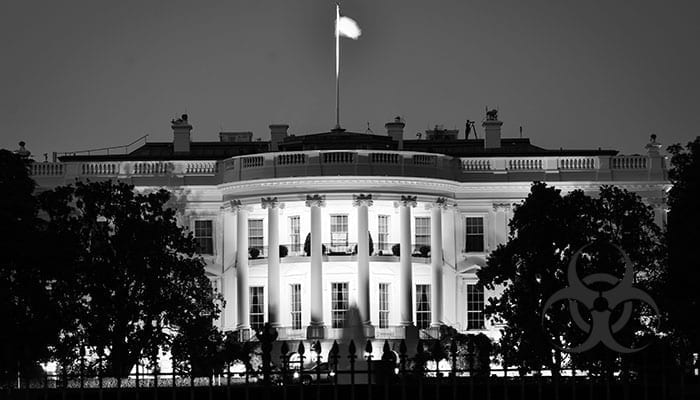Within months of President Barack Obama taking the oath of office in January 2009, he was confronted by a novel strain of H1N1 influenza spreading throughout North America and then the world. At the same time that the United States was mobilizing to respond to the first flu pandemic of the 21st century, the Obama administration was attempting to fill senior positions within key Federal agencies with qualified, knowledgeable individuals. Although the United States is not currently facing a pandemic, this situation could change quickly and dramatically. China is currently experiencing its fifth and largest outbreak of Asian lineage avian influenza A (H7N9) virus (“Asian H7N9”). According to the Influenza Risk Assessment Tool (IRAT), Asian H7N9 is the influenza strain with the greatest potential to cause a global pandemic. Based on the ten criteria measured by the IRAT, Asian H7N9 presents a moderate to high risk of developing the potential to be transmitted from person-to-person and having a severe public health impact. In February, Bill Gates, the richest man in the world and a leading global health philanthropist, warned that the next pandemic could claim 30 million lives worldwide and cost the global economy $570 billion.
Despite this heightened risk of a global pandemic, the Trump Administration has dragged its feet in appointing senior officials to key Federal agencies responsible for preparing and responding to a pandemic or bioterrorist attack. These agencies are also subject to steep budget cuts under Trump’s budget for Fiscal Year 2018. The delays in installing senior leaders at these agencies and pending budget cuts puts U.S. and global health security at risk.
The Department of Health and Human Services (HHS), Centers for Disease Control and Prevention (CDC), National Institutes of Health (NIH), and US Agency for International Development (USAID) ) are four crucial agencies responsible for preparing for the next pandemic. Within HHS, Trump has yet to nominate anyone to fill the position of the Assistant Secretary for Preparedness and Response (ASPR), who is responsible for building Federal emergency medical operational capabilities, developing medical countermeasures, and providing grants to strengthen the capabilities of hospitals to cope with medical disasters. The CDC, which is tasked with detecting and containing disease outbreaks in the United States and provides grants to state and local health departments to help them prepare for public health emergencies, has played a vital role in responding to major outbreaks at home and abroad. While the agency is currently being led by acting director Dr. Ann Schuchat, a well-respected, 30-year veteran of the agency, her ability to mobilize the resources needed to respond to a pandemic or other health crisis may be stymied by her interim status. Although President Trump wisely asked Francis Collins to stay on as director of NIH, he has also proposed cutting the biomedical research agency’s budget by $5.8 billion, or about 18%. In the event of a pandemic, the NIH will play a crucial role in characterizing the pathogen responsible for the outbreak and supporting research to develop diagnostics, vaccines, and therapeutics to contain the outbreak. And yet Trump’s budget eliminates the NIH’s Fogarty International Center which supports international health research. Finally, the Trump Administration has failed to nominated anyone to fill any of the 11 Senate-confirmed posts at USAID, which plays a key role in helping developing countries improve their public health systems to detect and respond to emerging infectious disease threats. USAID, together with the State Department, is also poised to take a 31% budget reduction under Trump’s proposed budget. USAID’s $72 million Global Health Security fund is slated for elimination, which would dramatically affect the ability of the U.S. to work with international partners to combat the spread of infectious diseases like H7N9. The only positive element of the budget related to health security is Trump’s proposal to create a Federal Emergency Response Fund to enable more rapid responses to public health emergencies. Although the size of the fund has not yet been disclosed, given the Trump Administration’s stated priorities the funds will likely come from other parts of the health security budget.
These funding cuts combined with numerous vacancies in influential positions in agencies responsible for health security is a dangerous combination. Having confident, informed leaders running these organizations with sufficient resources is necessary to ensure that these agencies can effectively produce vaccines and diagnostics and implement preventative measures to control an outbreak of H7N9 or another strain with pandemic potential. If a major influenza pandemic were to occur, no wall would be high enough to stop the virus from entering the United States. The best defense against pandemics and other disease threats are Federal, state, and local health agencies and international partners with strong leadership and the necessary resources to fund vital surveillance, preparedness, response, and research activities Mother Nature doesn’t play politics; Trump shouldn’t play politics with global health security.
Gregory D. Koblentz is an Associate Professor and Director of the Biodefense Graduate Program at the Schar School of Policy and Government at George Mason University. Nathaniel M. Morra is a graduate student in the Biodefense Program at George Mason.



